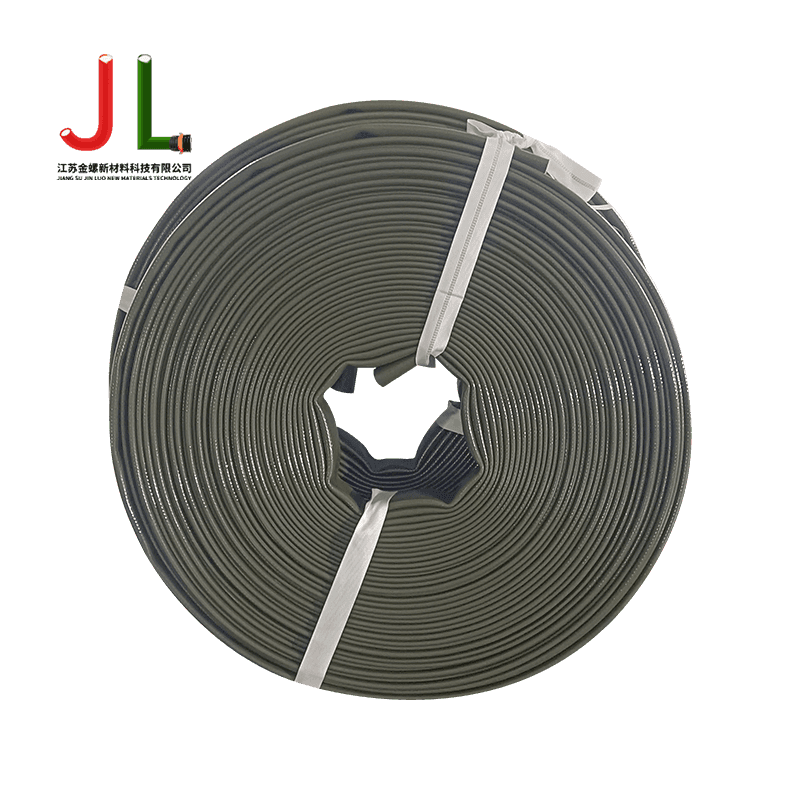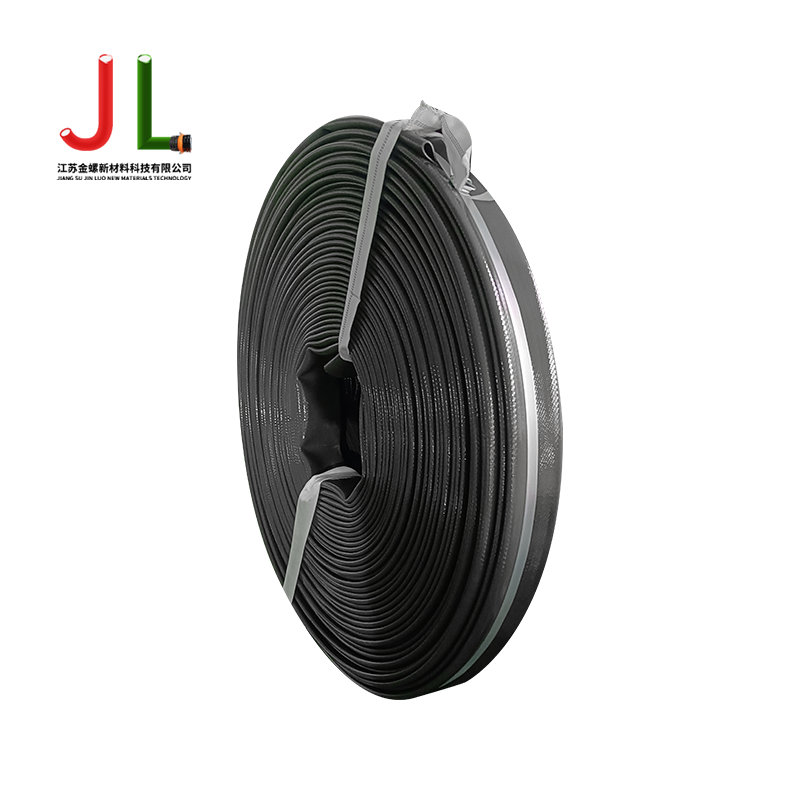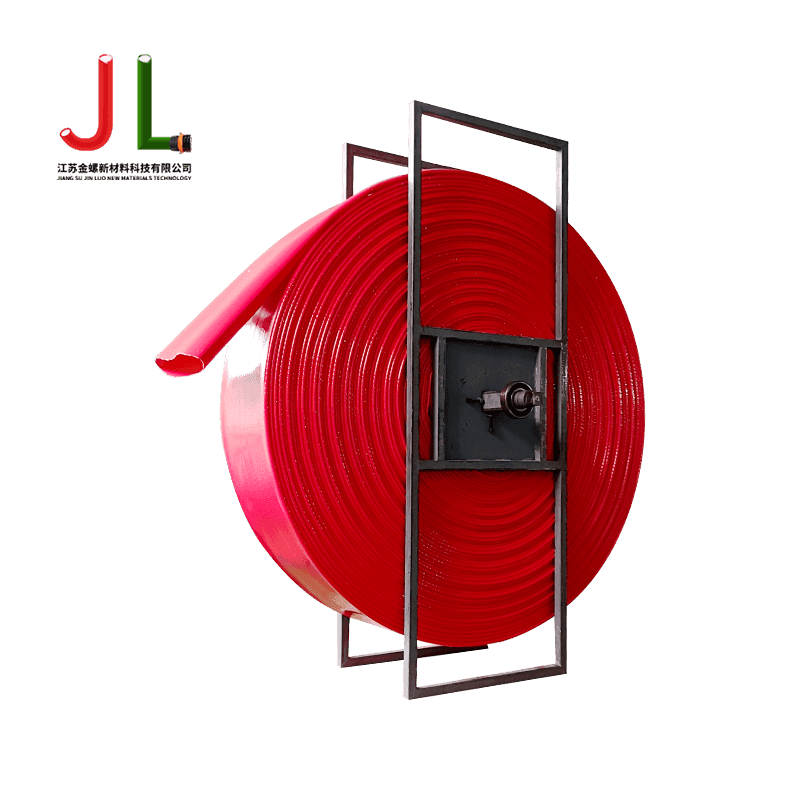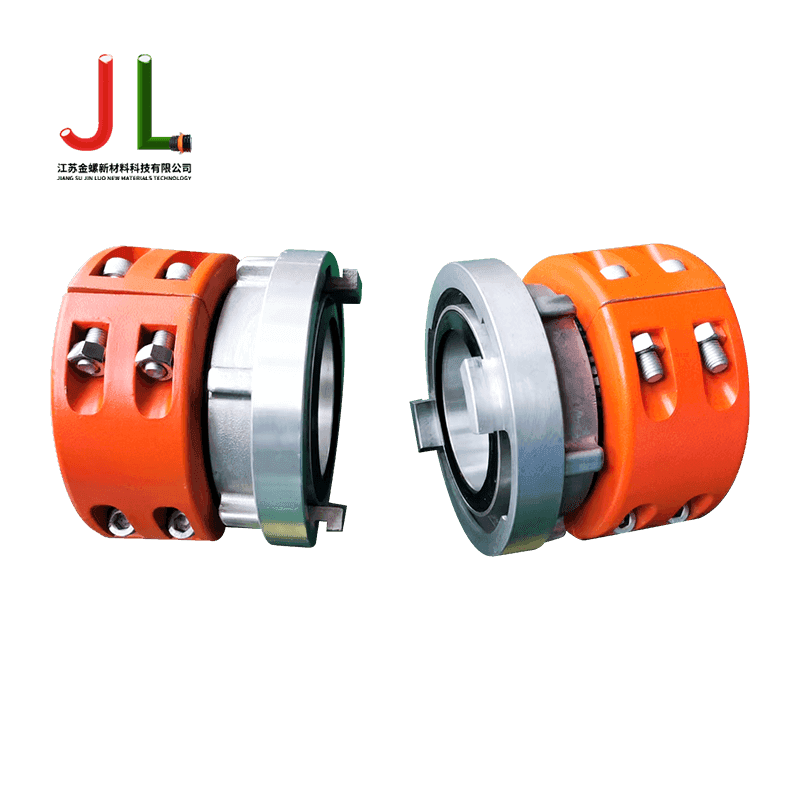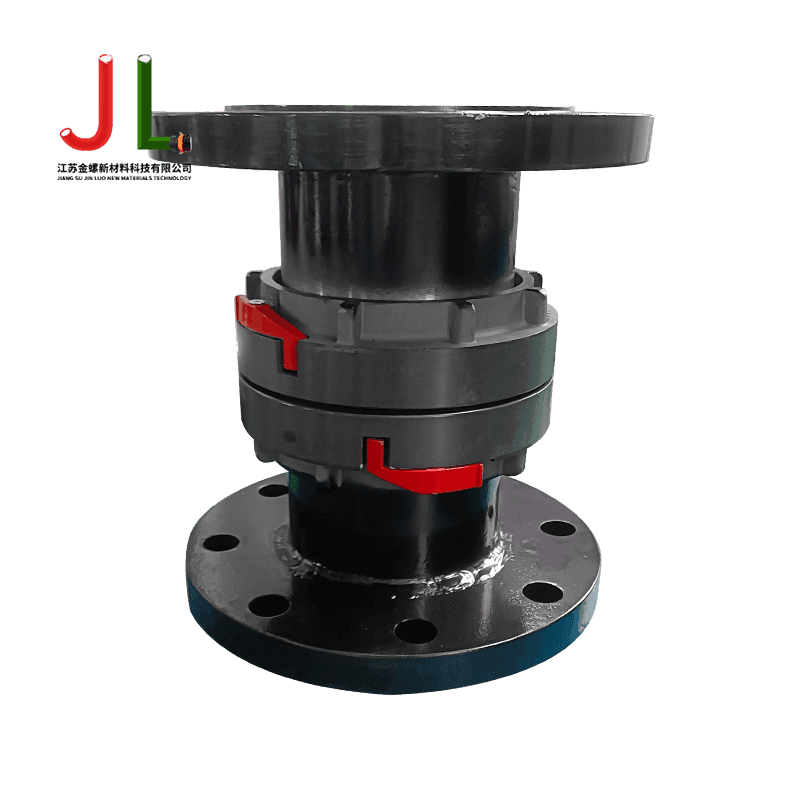High-Performance Fracturing TPU Hose for Industrial Applications
Understanding Fracturing TPU Hoses
Fracturing TPU hoses represent a critical advancement in industrial fluid transfer technology, specifically engineered to handle the extreme pressures and abrasive materials encountered in hydraulic fracturing operations. These hoses are constructed from Thermoplastic Polyurethane (TPU), a material renowned for its exceptional durability, flexibility, and resistance to a wide range of environmental challenges. The core function of a fracturing hose is to transport high-pressure fluids, proppants like sand, and various chemicals from pumping equipment to the wellhead during the fracturing process. Unlike conventional rubber hoses, TPU-based hoses offer a superior combination of mechanical strength and operational longevity, making them indispensable in demanding sectors such as oil and gas extraction, mining, and heavy construction. The unique molecular structure of TPU provides these hoses with an inherent resistance to wear, tear, and degradation, ensuring reliable performance under conditions that would rapidly deteriorate lesser materials.
The manufacturing process of these hoses involves sophisticated extrusion and reinforcement techniques to create a multi-layered structure. This typically includes an inner tube made of abrasion-resistant TPU, multiple layers of high-tensile synthetic fiber or steel wire braiding for pressure containment, and an outer cover formulated to withstand weathering, ozone, and ultraviolet radiation. This intricate construction is what allows the hose to maintain its integrity while being subjected to intense pulsating pressures and mechanical stress. For industries where equipment failure can lead to significant downtime, safety hazards, and financial loss, the reliability offered by a high-performance fracturing hose is not just a convenience but a fundamental operational requirement. Understanding the engineering behind these components is the first step in appreciating their role in enhancing the efficiency and safety of industrial fluid systems.
Key Features of High-Performance Fracturing Hoses
The defining characteristics of high-performance fracturing hoses are what set them apart from standard industrial hoses. These features are a direct result of the advanced TPU material and precision engineering, tailored to meet the rigorous demands of fracturing applications.
Superior Material Properties of TPU
Thermoplastic Polyurethane is the cornerstone of the hose's performance. It possesses a unique set of properties that make it ideally suited for harsh environments. Its high tensile strength and elongation at break allow it to absorb energy and withstand sudden pressure surges without failing. Furthermore, TPU exhibits outstanding resistance to abrasion, which is crucial when pumping slurries containing solid proppants. Compared to materials like PVC or standard rubber, TPU maintains its flexibility across a wide temperature range, from sub-zero conditions to elevated temperatures often encountered on industrial sites. This flexibility ensures that the hose does not become brittle in the cold or soften excessively in the heat, preserving its structural integrity and performance. The material is also resistant to many oils, greases, and chemicals, preventing swelling, cracking, or degradation that could compromise the hose from the inside out.
Robust Structural Design and Reinforcement
Beyond the base material, the structural design of the hose is critical for handling high operating pressures. The reinforcement layers, often composed of high-tenacity synthetic yarns or steel cord, are spirally or braid-wound around the inner tube. This design creates a robust cage that contains the internal pressure while allowing the hose to remain flexible. The number and angle of these reinforcement layers are carefully calculated to achieve the desired working pressure and impulse resistance. A high-quality outer cover, also made from specialized TPU compounds, protects these reinforcement layers from external damage, moisture, and UV radiation, thereby extending the service life of the entire assembly. This multi-layered, synergistic design is what enables the hose to perform reliably in the most challenging fracturing operations.
Selecting the Right Fracturing Hose for Your Operation
Choosing the appropriate fracturing hose is a critical decision that directly impacts operational safety, efficiency, and cost-effectiveness. A poorly selected hose can lead to frequent failures, unplanned downtime, and potential safety incidents. Therefore, it is essential to consider a comprehensive set of factors to ensure the hose is perfectly matched to the application's specific requirements. The process involves more than just comparing pressure ratings; it requires a deep understanding of the fluid media, environmental conditions, and dynamic stresses the hose will encounter.
Critical Selection Criteria
To make an informed choice, several key parameters must be evaluated. The following criteria form the foundation of a sound selection process:
- Working Pressure and Surge Pressure: The hose must be rated for the maximum continuous operating pressure of the system, as well as the occasional pressure spikes (surges) that occur during pump start-up or valve closure. Exceeding these ratings can lead to catastrophic failure.
- Media Compatibility: The inner tube material must be chemically compatible with the fluid being conveyed. This includes water, synthetic fracturing fluids, acids, oils, and abrasive proppant slurries. Incompatibility can cause the tube to swell, soften, crack, or degrade, leading to leaks and contamination.
- Temperature Range: The hose must perform effectively within the ambient and fluid temperature extremes of the job site. This includes resistance to becoming stiff in freezing conditions or losing mechanical strength in high-heat environments.
- Minimum Bend Radius: Every hose has a specified minimum bend radius. Bending the hose tighter than this radius can kink or damage the reinforcement, significantly reducing its pressure capacity and lifespan.
- Abrasion and Environmental Resistance: The outer cover must be tough enough to resist abrasion from dragging over rough surfaces, as well as degradation from sunlight, ozone, and weather.
Comparison of Key Hose Characteristics
To illustrate the importance of these criteria, the table below provides a comparison of how different hose constructions might perform across key selection parameters. This comparison helps in understanding why a fracturing TPU hose is often the superior choice for demanding applications.
| Characteristic | Standard Rubber Hose | Fracturing TPU Hose |
|---|---|---|
| Abrasion Resistance | Good, but can wear quickly with sharp aggregates. | Excellent, TPU is inherently highly abrasion-resistant, extending life with abrasive slurries. |
| Weight and Flexibility | Relatively heavy and can be stiff, making handling more difficult. | Lighter weight and more flexible, improving ease of deployment and storage. |
| Chemical Resistance | Varies by rubber compound; may not be suitable for all fracturing chemicals. | Broad resistance to oils, greases, and many chemicals, offering greater application versatility. |
| Pressure Rating (for comparable size) | Good, but may have lower impulse fatigue life. | Very high, with excellent impulse fatigue resistance, ideal for pulsating pressure cycles. |
As the table demonstrates, the fracturing TPU hose consistently outperforms standard rubber hoses in areas critical to the success and safety of fracturing operations. Its combination of lightweight flexibility and robust strength makes it a preferred component for engineers seeking to optimize their high-pressure fluid systems.
Durability and Performance in High-Pressure Environments
The true test of any industrial hose is its performance under sustained high pressure and mechanical stress. Fracturing operations are characterized by extreme and fluctuating pressures, often for extended periods. The durability of a high-pressure fracturing hose is therefore not a single attribute but a combination of several engineered features working in concert. The primary threat in these environments is impulse fatigue, which is the gradual breakdown of the hose structure caused by repeated cycles of pressurization and depressurization. A hose with poor impulse resistance will develop cracks in the inner tube, which can then penetrate the reinforcement, leading to blistering on the outer cover and eventual failure.
A high-performance TPU hose is specifically designed to combat this. The TPU inner tube is not only abrasion-resistant but also has high flexibility and tear strength, allowing it to absorb the cyclical stresses without micro-cracking. The reinforcement, whether synthetic or steel, is applied in a manner that distributes the stress evenly throughout the hose wall, preventing localized weak points. This results in an exceptionally high number of pressure cycles before failure, a key metric for high-pressure fracturing hose applications. Furthermore, the ability to withstand external abrasion means the hose can be dragged over rough terrain or repositioned frequently without compromising the integrity of the pressure-bearing layers. This overall durability translates directly into lower total cost of ownership, as hose replacement frequency is reduced, and the risk of costly downtime due to hose failure is minimized.
Industrial Applications Beyond Oil and Gas
While the primary and most well-known application for fracturing TPU hoses is in the oil and gas industry for hydraulic fracturing, their exceptional properties make them suitable for a wide array of other demanding industrial sectors. The core benefits of high pressure tolerance, abrasion resistance, and durability are valuable assets in any situation involving the transfer of aggressive media or operation in tough conditions.
Mining and Mineral Processing
In mining operations, these hoses are used for dewatering, tailings transport, and slurry handling. The abrasive nature of mineral slurries, which often contain sharp rock particles, requires a hose that can resist internal wear over long distances. The abrasion-resistant slurry hose variant of the fracturing hose is perfectly suited for this task, ensuring long service life and reducing the frequency of maintenance interruptions in continuous processing operations.
Construction and Industrial Cleaning
High-pressure water blasting for surface preparation, concrete hydro-demolition, and industrial vessel cleaning relies on hoses that can handle intense pressure pulsations. A fracturing hose for high-pressure water provides the necessary safety margin and impulse fatigue resistance for these critical tasks, ensuring reliable operation of high-pressure pumps and cleaning systems.
Chemical and Industrial Manufacturing
For transferring chemical additives, process water, or other industrial fluids, the chemical resistance of the TPU material is a significant advantage. It ensures that the hose does not contaminate the medium and remains structurally sound when exposed to a variety of chemicals, making it a versatile industrial thermoplastic polyurethane hose for general plant use.
Dredging and Sandblasting
Similar to mining, dredging involves pumping highly abrasive mixtures of sand, gravel, and water. Sandblasting operations require hoses that can withstand the relentless abrasion from propelled sand or other blast media. The robust construction of fracturing TPU hoses makes them an excellent choice for these severe applications, providing reliability where failure is not an option.
Maintenance and Safety Best Practices
To maximize the service life and ensure the safe operation of a fracturing TPU hose, a proactive maintenance and handling regimen is essential. Even the highest-quality hose can fail prematurely if subjected to misuse, improper storage, or a lack of inspection. Implementing a consistent set of best practices protects both personnel and equipment, contributing to a safer and more productive work environment.
Routine Inspection Protocols
A visual and tactile inspection should be conducted before each use and at regular intervals during operation. The goal is to identify any signs of damage or wear that could indicate an impending failure. Key things to look for include:
- External Damage: Check for cuts, gouges, or embedded materials in the outer cover. Any damage that exposes the reinforcement layer is a serious concern and typically requires immediate replacement.
- Blistering or Bubbling: This often indicates that the inner tube has failed and fluid is leaking into the reinforcement layers. This is a critical failure point, and the hose must be taken out of service.
- Kinking or Deformation: Permanent kinks can crush the inner tube and weaken the reinforcement, creating a weak spot that is prone to rupture under pressure.
- Coupling Integrity: Inspect the end fittings for signs of corrosion, leakage, or loosening. A failed coupling can be as dangerous as a failed hose.
Proper Handling and Storage
How a hose is handled and stored between uses significantly impacts its longevity. Avoid dragging hoses over sharp edges or abrasive surfaces. Do not run vehicles over them. When storing, it is best to coil large hoses in a figure-eight pattern or on a reel to prevent kinking and stress. Store them in a cool, dry, and dark place away from direct sunlight, ozone sources (like electric motors), and chemicals. Following these simple steps for your heavy-duty industrial hose will preserve its properties and ensure it is ready for reliable service when needed.
Future Trends in Hose Technology
The industry of high-performance hoses is not static; it is continuously evolving to meet new challenges and leverage advancements in material science and manufacturing. The future of fracturing TPU hoses points towards even greater efficiency, intelligence, and environmental sustainability. One significant trend is the development of new TPU polymer blends that offer enhanced performance characteristics, such as higher temperature resistance, improved flexibility in arctic conditions, or superior resistance to specific chemical cocktails used in advanced fracturing fluids. These material innovations will push the boundaries of where and how these hoses can be deployed.
Another exciting area of development is the integration of smart technology. Imagine a heavy-duty industrial hose embedded with fiber optic sensors capable of monitoring internal pressure, temperature, and strain in real-time. This data could be used to predict impending failures before they occur, enabling predictive maintenance and eliminating unplanned downtime. Furthermore, the drive towards sustainability is pushing manufacturers to explore bio-based TPUs and develop recycling programs for end-of-life hoses, reducing the environmental footprint of industrial operations. As these trends converge, the next generation of fracturing TPU hoses will be smarter, tougher, and more integrated into the digital ecosystem of the modern industrial site, solidifying their role as a critical component for years to come.



 English
English عربى
عربى 中文
中文

